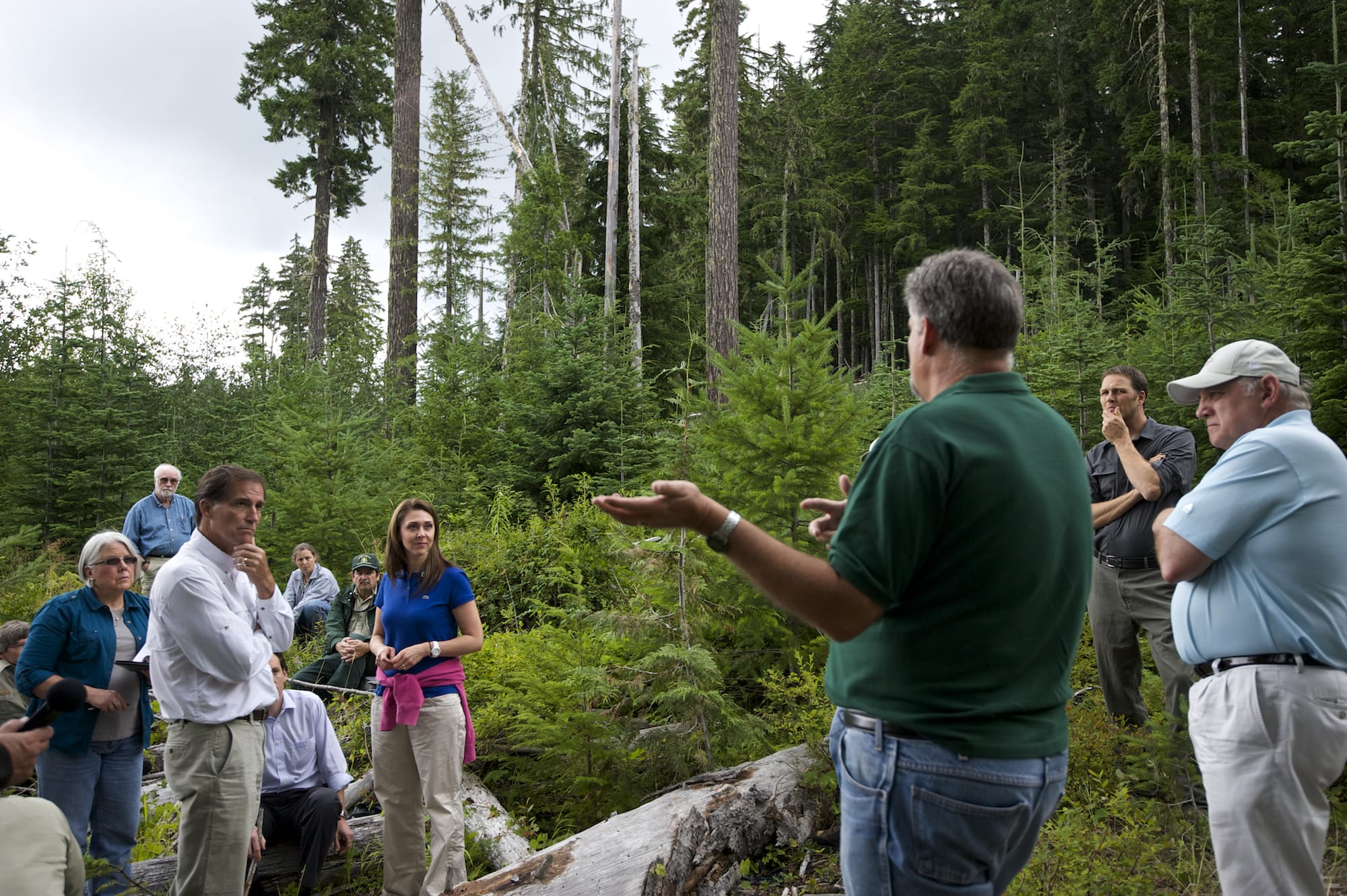STEVENSON — Lewis County Commissioner Lee Grose watched the jobs disappear and the mills go silent. He spent years discussing ways to bring them back.
And so, at a roundtable discussion hosted by U.S. Rep. Jaime Herrera Beutler, R-Camas, and U.S. Fish and Wildlife Service Director Dane Ashe, centered on how to increase federal timber harvest and improve the health of the forests, Grose told officials he was tired.
The schools have closed, he said. The professionals, the dentists and doctors, have left town.
“I have a problem with sitting at a table again telling the agencies the impact this is having on our communities,” Grose told the packed room at the Stevenson Community Library on Friday.
“You know this stuff, you guys know this stuff, and yet we still have severe limitations on management of the forest. We still have minimal extraction of timber of forests that grow tons of timber every year. We still have fires that devastate, and that are far more harmful not only to the community but to the habitat out there.”
The conversation was framed around the 1994 Northwest Forest Plan. The plan significantly decreased the amount of timber that could be harvested and added environmental protections for such species such as the spotted owl. In the Gifford Pinchot National Forest, where the group went for a tour after the roundtable discussion, logging opportunities started to dry up. Timber sales in the 1.3-million-acre forest fell from 689 million board-feet in 1990 to down to 33 million board-feet in 2012.
Skamania County Commissioner Bob Anderson said when he was a kid growing up in the region, two people from his community went to Portland to work. Now, he said, about 60 percent of the county’s workforce has to leave every morning in order to collect a paycheck. Young families are finding it harder to stay in the area, and more students are taking advantage of free-and-reduced lunch meals at school. About 80 percent of the county is covered by the Gifford Pinchot National Forest.
Toward the end of his comments, he struck a more optimistic tone. “I would like to experience a time I once knew in this county,” he said.
“It can work … and it is time,” he said.
Ashe, with the U.S. Fish and Wildlife Service, said agencies and interested parties have a choice: “Swing the pendulum one way or build alignment.”
“Let’s define this thing we’re calling healthy forests and then let’s walk in that direction,” Ashe said.
Surrounded by different varieties of huckleberries and towering trees in the Gifford Pinchot National Forest, the group, along with others from the U.S. Fish and Wildlife Service and the U.S. Forest Service, sat in the forest to discuss different ways to manage the forest, ideas that could bring back the jobs but also protect the old growth.
Herrera Beutler said it was about building coalitions and consensus.
“What I see here is people thinking outside the box,” she said. “There is one million reasons (why the ideas) won’t work, but that is no longer an answer. … Let’s try something that hasn’t been done before.”




